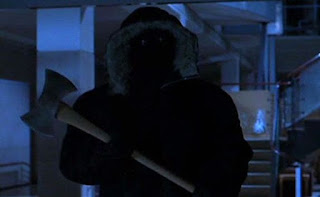Year of Release: 1998
Director: Jamie Blanks
Screenplay: Silvio Horta
Starring: Alicia Witt, Jared Leto, Rebecca Gayheart, Joshua Jackson, Natasha Gregson Wagner, Loretta Devine, Tara Reid, Michael Rosenbaum, Robert Englund, John Neville,
Running Time: 100 minutes
Genre: Horror, slasher
The students at the prestigious Pendleton University in New Hampshire are targeted by a parka-wearing serial killer who murders people in ways based on famous urban legends. The victims seem to be connected by one student in particular, Natalie (Witt) who teams up with journalism student Paul (Leto) to put an end to the bloodshed.
This is one of a glut of similar slasher films that were released in the late 1990s following the success of Scream (1996). It has an engaging cast including up and coming young stars, TV stars and older cult movie actors such as Robert Englund, who played Freddy Krueger in the Nightmare on Elm Street films, a soundtrack full of Goth and nu-metal music, elaborate and grisly murders, a convoluted plots and some comedy, with a number of in-jokes (in one scene Joshua Jackson starts his car and the theme from Dawson's Creek (1998-2003), the show he starred in, starts playing and he hurriedly switches it off). One of the film's problems is that the only likeable characters are Alicia Witt's Natalie and Loretta Devine as campus police officer Reese. The other characters are so unpleasant it's really hard to care what happens to them. The film is pretty ridiculous, full of implausible coincidences and red herrings, the ending is particularly ludicrous. Having said that it is enjoyable enough. It has a few good thrills and scares, and if you are in the right frame of mind for it, you can have some fun with it. It was followed by two sequels, and a remake is being planned, for some reason.
A killer on the prowl in Urban Legend










